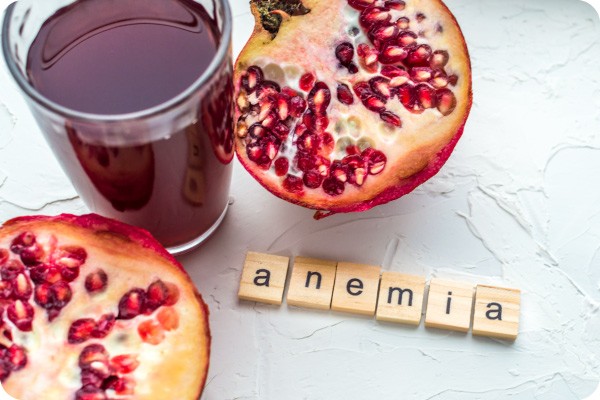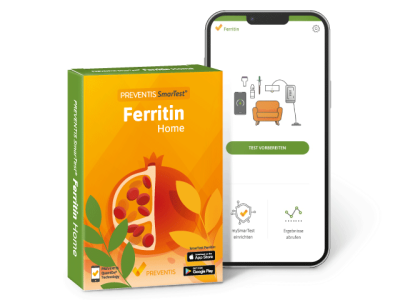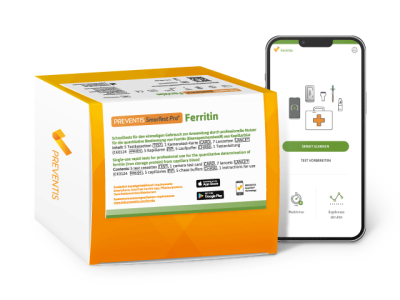What does Iron do for your body?
Iron is a mineral that your body needs for growth and development, and it is stored in different forms throughout the body:
- About 70% of the iron in your body can be found in a protein called haemoglobin. Your body uses iron to make haemoglobin, a protein in red blood cells that carries oxygen from the lungs to all parts of the body, and myoglobin, a protein that provides oxygen to muscles.
- 6% of Iron is found in other essential proteins
- 25% is stored in your body in a protein called Ferritin. Your body also needs iron to make some hormones.
What is Ferritin?
Ferritin is a key protein found in every cell of the body that acts like a storage unit for iron, an essential mineral we need to stay healthy. Imagine Ferritin as a warehouse, holding onto iron and keeping it tucked away in places like your liver, spleen, muscles and bone marrow until your body needs it. This makes Ferritin an ideal protein to measure how much iron your body stores. If a Ferritin test shows that the blood Ferritin level is low, it means that the body’s iron stores are low.
Ferritin plays a key role in regulating your iron levels, which are crucial for making haemoglobin. Without enough iron, you might experience symptoms such as fatigue and weakness due to iron deficiency anaemia. Ferritin isn’t just about storing iron; it also plays a role in protecting your cells from damage. When iron is not stored properly, it can become toxic, leading to serious problems like inflammation or liver disease. By keeping iron safely stored, ferritin ensures your body has what it needs for vital functions such as muscle metabolism, oxygen transport and even DNA synthesis.
What influences my Iron levels?
Iron is not made in the body and has to be absorbed from what you eat. If you aren’t consuming enough food that has iron, this will affect your iron levels. The amount of iron you need each day depends on your age, your sex and whether you consume a mostly plant-based diet.
There are two types of iron in foods:
- Heme Iron: Heme iron is found in red meat, poultry and pork and is easily absorbed by the body
- Non-Heme Iron: Non-heme iron is found in foods like greens, tofu, beans, eggs and dried fruits. It is not as easily absorbed by the body but still a good source of iron and essential if you don’t eat meat.
Additionally, certain groups of people are more likely than others to have trouble getting enough iron:
- People with heavy periods
- Pregnant people
- Infants (Especially if they are premature or low-birth weight)
- Frequent blood donors
- People who follow a vegetarian or vegan diet
- People with cancer, gastrointestinal (GI) disorders, or heart failure
What if my Iron levels are low?
If your iron levels are low, in the short term this usually will not cause obvious symptoms. Iron is stored in Ferrtin in the muscles, liver, spleen, and bone marrow. However, when these iron store levels become low, this can cause iron deficiency.
There are two main types of iron deficiency:
- Absolute Iron Deficiency: This occurs when the body's iron stores are depleted or insufficient to meet the body’s needs. It's typically characterized by low levels of circulating ferritin, reflecting depleted iron stores. This condition is commonly seen in individuals with iron deficiency anaemia, where there is not enough iron available for red blood cell production, leading to decreased haemoglobin levels and impaired oxygen transport.
- Relative (Functional) Iron Deficiency: In this type, the body has enough iron stores, but the actual availability of iron is limited due to factors such as impaired iron utilization or increased iron demand. Here, ferritin levels may be normal or elevated, indicating sufficient iron stores, but serum iron levels or transferrin saturation may be low, reflecting decreased iron availability for cellular use. This is commonly observed in conditions associated with chronic inflammation, infection, or other underlying diseases that disrupt iron metabolism.
People with mild or moderate iron-deficiency anaemia may not have any symptoms. However, people with more serious iron-deficiency anaemia may have common symptoms such as: fatigue, dizziness or lightheadedness, cold hands/feet, pale skin, problem with concentration and memory, as well as experiencing a weakened immune system.
How are Iron levels measured?
Your doctor may check your iron levels as part of blood work. Doctors will typically order blood tests to check your haemoglobin levels and ferritin levels.
Ferritin testing is more than just a measure of iron levels; it can provide insights into a variety of health issues. Low ferritin levels typically indicate iron deficiency, which can lead to anaemia and symptoms like fatigue, weakness, and impaired immune function. On the other hand, high ferritin levels can signal inflammation or chronic diseases such as liver conditions, rheumatoid arthritis, heart disease, diabetes, or even certain cancers.
Introducing Preventis SmarTest® Ferritin Home
Given the complexities and importance of managing iron levels, one way in which you can reliably and easily monitor at home without the need to go to your doctor is with the Preventis SmarTest® Ferritin Home kit. The Preventis SmarTest® Ferritin Home is a rapid test that allows you to quantitatively determine ferritin levels in capillary blood from the comfort of your home. This test can be used for individuals to monitor their iron levels and support in them getting diagnosing absolute or relative iron deficiency or overload. It’s a simple, single-use test that is easy to perform and is accompanied by a smartphone app that evaluates your results instantly, making it suitable for self-testing by anyone aged 18 and over.
How is iron-deficiency anaemia treated?
Several treatments can be used to treat anaemia.
- Iron supplements ~ Usually, iron tablets will be recommended to improve your iron levels.
- Dietary changes ~ A diet rich in iron and Vitamin C (Vitamin C helps with the absorption of iron) will be recommended.
If iron deficiency anaemia severe, iron may be given intravenously or blood transfusions may be needed to help replace iron and haemoglobin quickly.
Can too much Iron be harmful?
Yes, iron can be harmful if you get too much. Normally, there is very little free iron in the body, with the majority being stored in haemaglobin and ferritin.
If healthy people take high doses of iron supplements, this can cause nausea, abdominal pain, vomiting and diarrhea.
Additionally, large amounts of iron can also result in more serious effects, including ulcers and inflammation of the stomach lining. In extreme cases, high doses of iron can cause toxicity and organ damage. Excessive amounts of iron in the body is known as iron overload.


